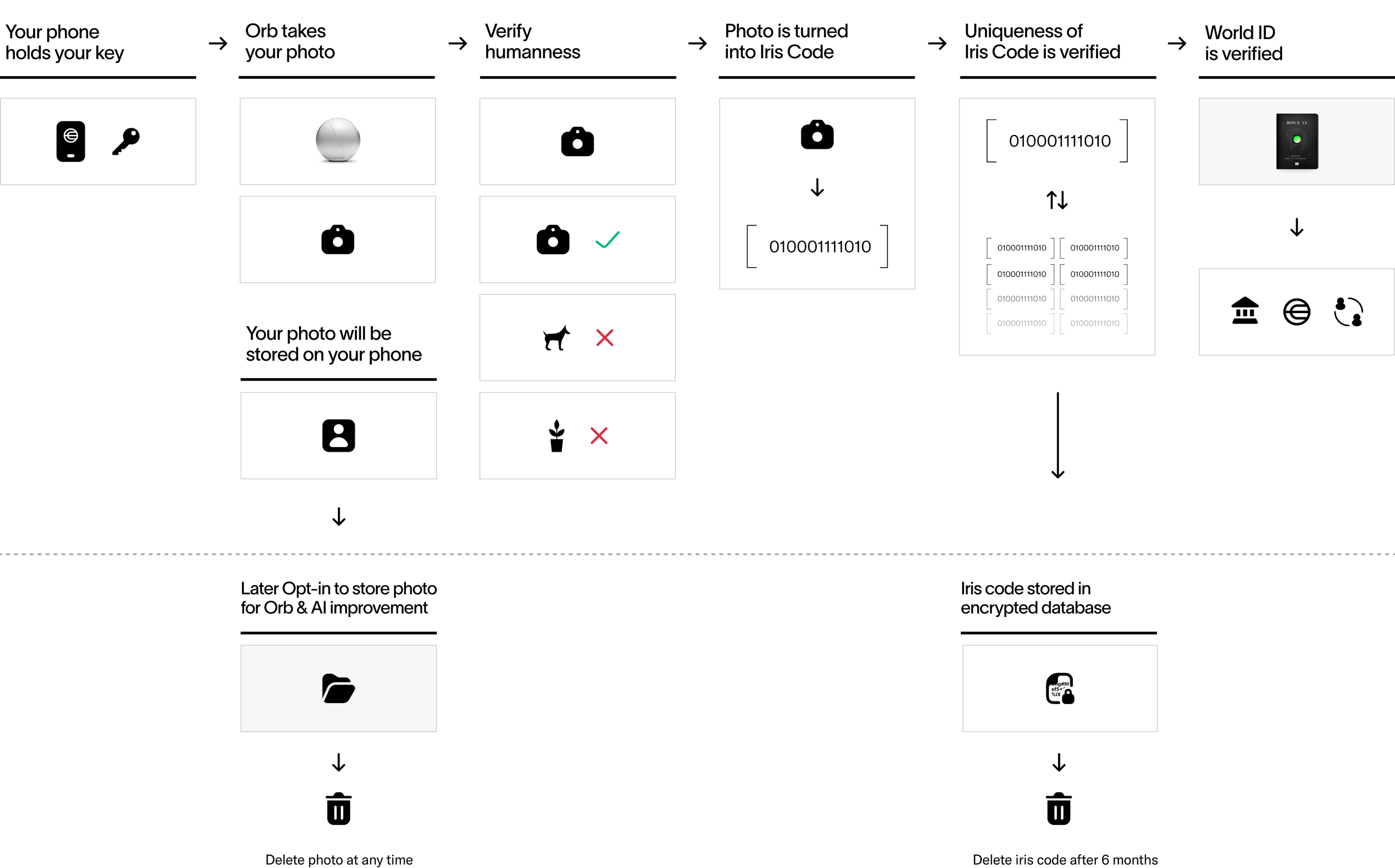Completely private. Forever.
We don’t want to know who you are,
just that you are unique.
Orb Privacy
The Orb checks that you are a real human and that you have not signed up before. It does this by capturing and processing images of you and your unique iris pattern.
Since no two people have the same iris pattern and these patterns are very hard to fake, the Orb can accurately tell you apart from everyone else without having to collect any other information about you — not even your name.
We don’t want to know who you are, just that you are human and unique.
The Orb takes images of the face and the eyes to ensure that you are human and unique. Then, the Orb creates an iris code from the image of the eyes.
This iris code is a set of numbers generated by the Orb and is not linked to your wallet or your World App account. As a result, it really tells us — and everyone else — nothing about you. All it does is stop you from being able to sign up again.
Since you are not required to provide personal information like your name, email address, physical address or phone number, this means that you can easily sign up without us knowing who you are.
You are in control of your data
Your data is encrypted and stored locally on your device.
Personal Custody means that the information generated at the Orb when you verify your World ID (images, metadata and derived data, including the iris code) is held on your device.
Personal Custody enables use of Face Authentication for high security applications. With Face Authentication, you can verify at any time that you are the same person that received your World ID. This works locally on your device, without your face data leaving your phone.
Neither the Worldcoin Foundation nor Tools for Humanity can decrypt the encrypted files when they are passing through their servers to arrive at your phone. The system has been designed to keep your data secure even in the case your phone gets compromised.
World ID holders can also unverify their World ID at any time. This includes the permanent deletion of their iris code, which is a numeric representation of their unique iris texture.
Here you can see what happens to your data when you sign-up with the Orb:


App Privacy
We don’t want your name, email, passport, or a selfie.
Your Worldcoin App is your self-custodial wallet. That means, just like a physical wallet, that no banks, governments or corporations can do anything to it — like lose or freeze your money — you’re in complete control.
Humanness in the age of AI
World ID Privacy
Prove that you are a real and unique person, without revealing who you are.
World ID is private by design, offering unmatched control over information. Once you have a World ID, you can use it to prove that you are a real and unique person without revealing who you are. Importantly, developers — including us — cannot see what you have used your World ID for in the past; they can just see what you are trying to use it for when you use it.
This is made possible by Zero-Knowledge Proofs, which prove both that your World ID is real and that you have never done the action you are trying to do before, without revealing who you are.
